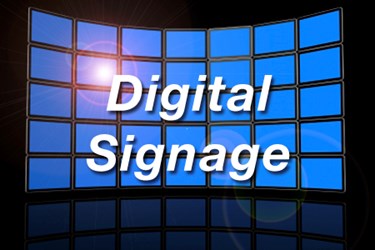3 Digital Signage Markets You Might Have Overlooked
By The Business Solutions Network

In our March issue, we featured Industry Weapon, an ISV whose digital signage expertise and subscription-based recurring revenue model are leading it to a sixth consecutive year of triple-digit revenue growth! In addition to speaking about the ISV’s growth and business strategies, we asked Craig Hanna, COO of the company, to share the markets where his company sees the greatest opportunity for digital signage sales. His answer — retail (but not like you're thinking), manufacturing, and higher education — weren’t able to make it into the main article, so I wanted to share them with you here.
Concerning retail, you might be surprised that Hanna isn’t referring to in-store signage, although that is definitely a sales opportunity. “Through our customer relationships we've found that the corporate communications market benefits from company performance metrics including sales, project management, and support,” Hanna says. “We do a lot of work with corporate headquarters of retail chains. In that type of environment it's critical to push store performance and customer feedback to the corporate facility since their main focus is typically to support their stores.” He goes on to say that digital signage is a great way to create change within an organization by integrating with the programs, processes, and applications companies already use to run their business. “It's important to mix entertaining and socially relevant content to attract and retain viewership,” he continues. “Doing this keeps content fresh and not solely company-focused, which employees appreciate. In return, business leaders will see greater adoption around their communication objectives.”
Similarly, Hanna says that the manufacturing market typically bases its messaging around company performance, including production line efficiencies and goals, incident and injury reports, safety messaging, HR announcements, and general best practices. “Internally publicizing these statistics and information encourages employees to strive for personal and company goals and creates a team atmosphere,” he says. “If they have multiple locations, digital signage is a great way for companies to share statistics and updates with other remote facilities.”
Finally, the ISV says there’s an opportunity in higher education. Hanna has some great insight to share. “If there is one thing we've learned through our relationships with our customers in the higher education market it is that students prefer to get their information from their peers,” he reveals. “We’re also aware their technology of choice rapidly changes, and we are prepared to adapt accordingly.” He goes on to explain that optimal messaging includes social media, sporting event schedules and scores, alumni information, wayfinding, alerts, and directory integrations. “We automate as much of this messaging as possible to allow both students and faculty to use the tools they already have to push messaging to their screens.”
In conclusion, Hanna shares a digital signage tip that’s not unlike a best practice for successfully selling any other technology. “Our priority with every customer is to fully understand their organizational goals, content strategies, and audience demands to ensure they are successful with their digital signage,” he says. If you’ve got customers in any of these verticals, talk to them about how digital signage can help them achieve their goals. If your customers fall within other verticals, you still might find that a sales opportunity for digital signage exists.
